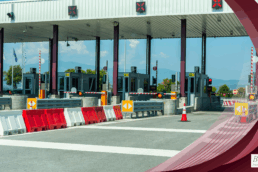In May of 2013, CBP created a new office, within the existing Office of Field Operations, called the Entry/Exit Transformation (EXT) Office. The Entry/Exit Transformation team’s mission is to enhance the integrity of the immigration system through assurance of traveler identity. The ultimate goal is to verify who is arriving in the U.S., determine who is abiding by the terms of their admission and who is not, and when individuals depart – all while enhancing border security and not interrupting the normal flow of travel or trade.
CBP has adopted a multi-faceted strategy to meet these goals which includes assessment of existing operational processes; evaluation, testing and deployment of technologies; and implementation of “non-intrusive” technology that is “transparent to the traveler, enhances border security and responds within seconds to the CBP officer and ensures our economic security.”
So what are the strategies CBP will be using to meet their mission and goals? Read on …
1. Improve current biographic entry-exit system: Biographic data is text-based data used to convey basic information on a traveler such as name, gender, date of birth, identity, travel documents and so on. CBP currently collects almost 100 percent of departure data from foreign nationals leaving the U.S. by air or sea, but data from land departures lags behind. CBP will continue to expand partnership opportunities with Canada to exchange data on activity across the U.S./Canada land border. For example, entry information collected by one country will be recorded as exit information for the partner country. Similar discussions are under way with Mexico. This step is expected to happen in Federal Fiscal Years 2013 – 2015. (The federal fiscal year runs from Oct. 1 through Sept. 30, so FY 2013 actually started in October 2012.)
2. Targeted biometrics operations: Biometrics are ways of identifying individuals using their unique physical characteristics such as fingerprints, facial structure, eyes and voice. CBP will simultaneously target biometrics operations in the air, land and sea to support exit data. CBP will be testing emerging biometric technologies like ways to collect biometric data in the air, and facial or iris recognition on the ground. The focus is to develop processes and implement technologies that help in law enforcement efforts but don’t disrupt travel or trade. This step is expected to happened in fiscal years 2014-2018.
3. Existing Process Transformation: CBP is looking for ways to use a strategic phased approach to deploy a secure traveler process that provides law enforcement and others with clear and complete arrival and departure data. This final step is expected to occur in fiscal years 2015-2020.
One major hurdle the EXT Office faces is developing this start-to-finish entry/exit plan that provides the data and security necessary in today’s world, while not delaying and negatively impacting existing systems. Ports of entry were never set up to control the EXIT of individuals. For example, airports are privately owned and there are no federal inspection areas through which travelers depart the U.S. As a result, any potential solution must integrate with existing port infrastructure. So while the process of evaluation and study moves forward, travelers should not expect to see any outward signs of actual transformation for quite a while yet.
For more information regarding border security measures or to consult with the immigration attorneys at Berardi Immigration Law, please visit https://berardiimmigrationlaw.com/contact-immigration-lawyers.
Ready to have Berardi on your side?
Whether you’re a business looking to hire or a professional hoping to relocate, immigration law can be complicated. But you don’t have to do it alone. Put our experience to work for you.

